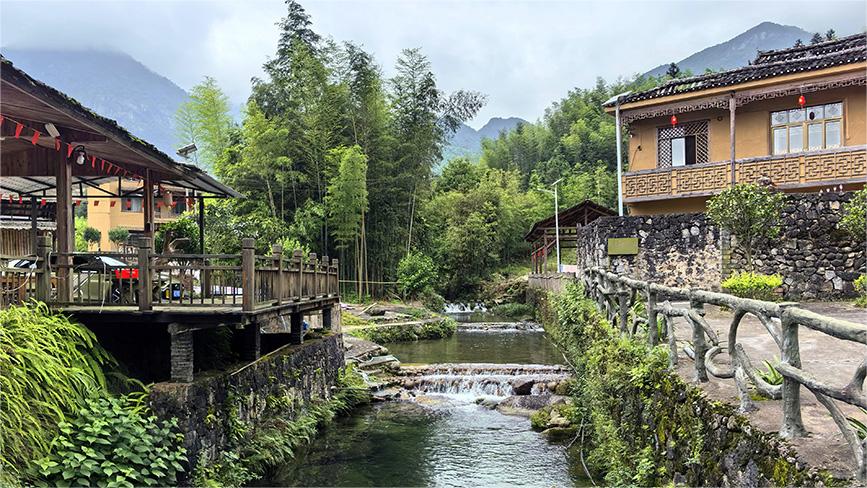Xinjiang Story: Armed with novel tools, new generations become guardians of millennium-old city ruins
URUMQI, Aug. 27 (Xinhua) -- Zhao Yong's childhood memories include listening to his father's history bedtime stories, occasionally accompanying his father on his patrols of the ruins of an ancient city, and encountering artifacts on those patrols.
Zhao Yong is now 45, working as a farmer and a guardian of the ruins of Dalt, a millennium-old city and national-level cultural relic protection site in Qagansum Village, northwest China's Xinjiang Uygur Autonomous Region.
The ancient city is believed to date back to the Song (960-1279) and Yuan (1271-1368) dynasties, archaeological research has shown.
Having grown up near the ancient city and having worked to preserve it for about two decades, Zhao Yong has become familiar with its structure and the stories behind it, influenced by his father, Zhao Yuecai, who was once also a farmer.
"When archaeological teams visited Dalt, we led the way and informed them about the areas where crystals and ancient coins were found. We were almost always correct in our guidance," Zhao Yong said.
In the 1960s, Zhao Yuecai migrated from east China's Shandong Province to Pochengzi Village -- now Qagansum Village -- in Xinjiang's Mongolian Autonomous Prefecture of Bortala.
Back then, the farmers in the village would sometimes use the fertile soil of the ancient city walls for farming, and they would unknowingly unearth pieces of metal or pottery as they tilled the land, attaching little importance to their finds.
In the early 1980s, farmers working the fields found a pottery jar filled with silver coins. Their find brought locals to realize that there could be an ancient city beneath the land on which they lived. The revelation of Dalt soon garnered attention from relevant authorities.
In 1985, when Zhao Yong was six years old, local authorities issued a notice declaring Dalt to be a cultural relic protection site and implementing measures for its preservation.
Shortly thereafter, the village designated Zhao Yuecai as a guardian of the ancient city and awarded him a red armband. He was primarily responsible for ensuring Dalt's security, and would occasionally bring his son along on his patrols.
In 1987, Zhao Yuecai met several archaeologists who came to survey the ancient city. Under their influence, he read extensively and acquired knowledge of cultural relics to protect the ancient city as best he could. He handed the artifacts he had discovered over to local authorities, and persuaded others to do the same.
Although he didn't receive a salary, he played the role of guardian for two decades until 2007, when his failing health no longer allowed him to keep up his work. Zhao Yong later took up the baton from his father.
In 2013, the Dalt ancient city ruins were listed as one of China's key cultural relic protection sites. And starting in 2016, with the approval of the National Cultural Heritage Administration, the Xinjiang regional institute of cultural relics and archaeology collaborated with various cultural relic departments in Bortala to conduct archaeological work on the site, according to Tian Xiaoyan, director of the ancient city's conservation and management center.
Dalt's total excavation area has neared 5,600 square meters. More than 2,900 pieces or sets of small artifacts such as coins, ceramics, metal and glass have been unearthed. Traces of ancient buildings, beacon towers and tombs have also been found in the vicinity, Tian said, noting that several guardians now work to protect the ancient city.
In 2016, Zhao Yong was officially appointed as a guardian of Dalt, obtaining a work permit and receiving a monthly allowance of 2,000 yuan (about 281 U.S. dollars).
He conducts more than eight patrols each month, taking notes on the condition of relics, including any safety hazards and the state of relic protection equipment. Details are jotted on paper forms and then collated, before being sent in reports to local cultural relic authorities.
Over nearly 20 years, his knowledge of archaeology and related professional skills have continued to grow.
Previously, he would hand any cultural relics he discovered to local cultural relic authorities directly. Now, he can assist with archaeological work by using a watermark app to photograph his discoveries, and by recording information such as location and time of discovery before handing them over.
His patrol work is now also facilitated by an intelligent monitoring system that was installed in the ancient city in recent years, incorporating some 45 high-definition cameras.
In addition to his own efforts, he also invites those around him to pitch in.
Wang Xiuping, Zhao Yong's wife, is one of a group of auxiliary personnel assisting with archaeological work in Dalt. She has been participating in this work since 2016, acquiring survey, mapping and cultural relic restoration skills, among others.
The couple's two children have also developed a great interest in cultural relics. Their son is particularly interested in history, and shares what he learns in his history classes at school with his father.
Their daughter, 20-year-old Zhao Xueting, is an industrial design major at Jiaxing Vocational & Technical College in east China's Zhejiang Province. Last winter, she returned to her hometown during her holidays and assisted the archaeological team by using her professional drawing and mapping skills.
"I have grown up in this kind of environment, so I am passionate about archaeology and cultural relic preservation. If given the opportunity, I am willing to carry forward the legacy of faith started by my father and grandfather," she said. Enditem
(Kong Weijia, Yuan Ziming, Wang Zixian and Luo Ying also contributed to the story.)
Photos
Related Stories
Copyright © 2024 People's Daily Online. All Rights Reserved.









